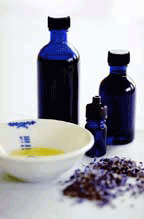
Many ACHS students and graduates prepare cosmetic products (including body lotions, shampoos, and soaps) using natural ingredients. You may prepare these for your own use, for friends and family, or for resale.
General Labeling RequirementsIf you sell your products, you must comply with FDA regulations. These are set out online at:
http://www.cfsan.fda.gov/%7edms/cos-toc.htmlThe following is the general information from that site at
http://www.cfsan.fda.gov/~dms/cos-labl.html but we strongly recommend that you read the full handbook.
Read this link ensure that you understand the difference between a cosmetic or a drug.
http://www.cfsan.fda.gov/~dms/cos-218.htmlAll cosmetics, whether they are sold on a retail basis to consumers or marketed exclusively for salon or workplace use, are subject to the FD&C Act. This law and regulations enacted under its authority require the cosmetic label to state the name and place of business of the manufacturer, packer or distributor; an accurate statement of the quantity of contents; and any appropriate directions for safe use and/or warning statements. This information must comply with additional regulatory requirements. It must be prominent and appear in the proper location on the label.
Regulations enacted under the FPLA require ingredients to be listed on the labels of cosmetics sold on a retail basis to consumers -- even if the label states "For professional use only." Consumers can use the ingredient declaration to identify ingredients they wish to avoid. Ingredients are listed in descending order of predominance, that is, with the ingredient present in the greatest amount listed at the beginning and those present in the smallest amounts listed at the end.
Special rules apply to the ingredient declaration on products that are both cosmetics and over-the-counter drugs. An example of such a product is an anti-dandruff shampoo: A shampoo is a cosmetic, while an anti-dandruff treatment is a drug. Regulations enacted in 1999 require such combination products to have the drug ingredients listed separately as "Active Ingredients," in alphabetical order, followed by the cosmetic ingredients, which are listed as "Inactive Ingredients" in descending order of predominance.
In addition to the immediate label, FDA regulates all cosmetic product "labeling." The definition of labeling includes all written, printed, or graphic matter that appears on the product, its containers, or its wrappers, as well as any such matter that accompanies the product. Typically, materials such as promotional literature, product catalogs, and flyers fit this definition of labeling. FDA also has considered promotional statements appearing on Internet sites to constitute labeling, especially on those sites where the promoted product can be purchased. However, unfair or deceptive advertising that appears in magazines, in newspapers, or on television generally falls under the authority of the Federal Trade Commission.
ContraindicationsYou are required to list "appropriate directions for use and/or warning statements" on your "label". How, you might ask, can you list these on a small label? After all, each essential oil or herbal formula may have several specific contraindications.
The answer lies in what the FDA considers to be "labeling". You will see that labeling includes flyers and, in most cases, websites. The most efficient way to include all the warnings relevant to your product is to asterix the items in question on the ingredients list, and include under the list, after the asterix, a reference to the directions for use and warnings information on the product flyer. On your product flyer, you can list your information easily. For your protection, you should include all warnings and contraindications for the ingredients in your product, even if you are using only a very small amount. This way, the consumer can decide whether they want to risk a reaction, not you!
For example, my essential oil massage blend might say:
Ingredients: Organic sweet almond oil, organic lavender Lavandula angustifolia essential oil, organic clary sage Salvia sclarea* essential oil.
* This ingredient should not be used if you are pregnant or nursing. Additional restrictions may apply, please refer to the product brochure or www.thebestnaturalproducts.com before use. Keep out of reach of children.
At the website or in the product brochure, a simple list of contraindications for the ingredients will suffice. If you have more than one product, you may wish to include a chart listing all the essential oils you use in alphabetical order.


